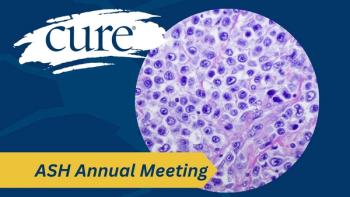
Chemoimmunotherapy Responses May Allow for Omission of Radiotherapy in Lymphoma
Patients with a subtype of lymphoma may be able to exclude radiotherapy if they respond to chemoimmunotherapy, although more follow-up is needed to assess potential long-term toxicities.
Omitting radiotherapy may be possible in patients with primary mediastinal large B-cell lymphoma who respond to chemoimmunotherapy, according to findings from a recent phase 3 trial.
Despite these findings, the researchers note that the event rate in the trial did reach the expected level and longer follow-up is needed to adequately assess long-term toxicities.
Data from the IELSG37 trial presented at the 2023
Additionally, the 30-month overall survival rate (the percentage of patients who are still alive for a period of time after treatment) with observation was 99.2% versus 99.3% with radiotherapy.
“IELSG37 is the largest randomized trial ever conducted in (primary mediastinal large B-cell lymphoma). (Based on our findings,) we can assume that mediastinal radiotherapy may be safely omitted in patients who obtain a (complete metabolic response) after initial chemoimmunotherapy,” said lead study author Dr. Maurizio Martelli, of the hematology department of translational and precision medicine at the University Sapienza in Rome, Italy, in a presentation of the data.
Primary mediastinal large B-cell lymphoma accounts for 6% of all diffuse large B-cell lymphoma and often presents in younger patients aged between 14 years and 30 years, according to Martelli.
Primary mediastinal large B-cell lymphoma is an aggressive disease, but it can have a good prognosis if remission is rapidly achieved with dose-intensive chemoimmunotherapy. Although mediastinal radiotherapy could consolidate responses, it has been linked with increased risk of coronary or valvular heart disease and second malignancies. Thus, radiotherapy in primary mediastinal large B-cell lymphoma represents a “therapeutic dilemma” in the field, according to Martelli.
In his presentation, Martelli noted that a Deauville score of 1 to 3 better discriminates patients who are at low or high risk of failure following induction treatment. Consolidation radiotherapy was administered to 102 of the 115 patients, irrespectively of this score, at the end of first-line treatment.
With the IELSG37 study, investigators set out to evaluate whether mediastinal radiotherapy can be omitted in patients with primary mediastinal large B-cell lymphoma who achieve a complete metabolic response (negative findings on a PET scan during or after treatment) following conventional Rituxan (rituximab)-containing chemotherapy regimens.
To be eligible for enrollment, patients needed to have treatment-naïve primary mediastinal large B-cell lymphoma that was CD20 positive with no evidence of extranodal disease (affecting areas or organs outside of the lymph nodes). They needed to be eligible to receive curative-intent radiotherapy and chemotherapy.
After confirmed diagnosis of primary mediastinal large B-cell lymphoma at baseline PET scan, patients received standard chemoimmunotherapy.
All patients determined to be PET negative, defined as having a Deauville score of 1 to 3, were randomly assigned mediastinal radiotherapy or observation.
The primary focus of the study was progression-free survival at 30 months from the assigned therapy in those who were PET negative at overall survival end of induction chemoimmunotherapy. Researchers also focused on overall survival at five years from registration and long-term toxicity.
Patients who were PET negative, defined as having a Deauville score of 1 to 3, were randomly assigned to observation (132 patients) or radiotherapy (136 patients).
Most patients in the observation and radiotherapy arms had an end-of-treatment PET Deauville score of 2 (51% versus 52%) followed by a score of 3 (45% versus 45%), and a score of 1 (5% versus 3%).
Regarding safety, one patient in the radiotherapy arm had severe heart failure and another patient in that arm had both life-threatening heart failure and severe high blood pressure; all of these toxicities resolved.
Life-threatening metastatic melanoma was observed at 22 months from randomization in a patient in the radiotherapy arm; this patient died from concurrent sepsis. Severe glioblastoma occurred greater than 55 months from randomization in a patient in the radiotherapy arm and this resulted in death. Lastly, life-threatening acute myeloid leukemia occurred at 15 months after randomization in a patient who received radiotherapy and this patient had a complete response after allogeneic transplant.
“Longer follow-up is needed to properly evaluate the long-term toxicity,” Martelli concluded.
For more news on cancer updates, research and education, don’t forget to





